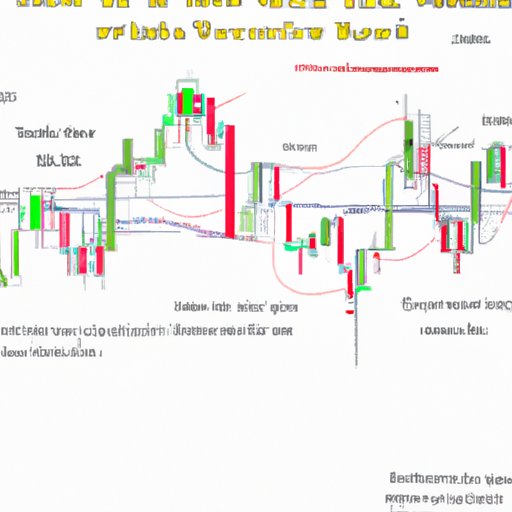An Overview of Technological Analysis: Exploring the Basics
Technological analysis is an important tool used by investors to understand how the markets are moving and how they can make informed decisions when it comes to their investments. By analyzing historical data and using technical indicators, investors can gain insight into the direction of the market and spot potential opportunities. In this article, we will explore the basics of technological analysis, including its definition, popular types, and benefits.
Definition of Technological Analysis
Technological analysis is a method of evaluating securities by analyzing historical data, such as prices and volumes, to identify patterns and trends that may indicate future performance. It is based on the assumption that all relevant information is already reflected in the price movements of the security, so it does not take into account fundamental factors like earnings or dividends. Instead, it focuses on the study of charts and other technical indicators to make predictions about future price movements.
Popular Types of Technological Analysis
There are several popular types of technological analysis that investors use to evaluate securities. These include trend analysis, chart patterns, support and resistance levels, and technical indicators. Trend analysis involves identifying the overall direction of the market, which could be up, down, or sideways. Chart patterns involve recognizing specific shapes and formations in the price chart, such as head and shoulders, triangles, and double tops and bottoms. Support and resistance levels involve identifying areas where prices tend to stop falling or rising, and technical indicators are mathematical formulas that measure different aspects of the market, such as momentum, volatility, and volume.
Benefits of Using Technological Analysis
Technological analysis can provide investors with valuable information that can help them make more informed decisions about their investments. It can help investors identify entry and exit points for trades, identify potential areas of support and resistance, and gauge the strength of a particular trend. Additionally, technological analysis can help investors assess the overall market sentiment, which can be useful when determining whether to buy or sell a particular security.

What Every Investor Should Know About Technological Analysis
While technological analysis can be a powerful tool, it is important to understand the fundamentals before diving into the world of technical analysis. Here are some key concepts that every investor should know about technological analysis.
Understanding Market Cycles
It is important to understand the different market cycles and how they can affect the price of a security. For example, bull markets, which are characterized by rising prices, tend to be more favorable for buyers, while bear markets, which are characterized by falling prices, tend to be more favorable for sellers. Understanding these cycles can help investors determine when to buy or sell a particular security.
Identifying Trends and Support/Resistance Levels
Trends and support and resistance levels can provide valuable insight into a security’s price action. Trends can indicate the overall direction of the market, while support and resistance levels can serve as barriers that limit the price movement of a security. By understanding these concepts, investors can make more informed decisions about their investments.
Interpreting Technical Indicators
Technical indicators are mathematical formulas that measure different aspects of the market, such as momentum, volatility, and volume. By studying these indicators, investors can gain insight into the current state of the market and make better decisions about when to buy or sell a particular security. However, it is important to remember that these indicators are only tools and should not be used as the sole basis for making investment decisions.
Charting a Course With Technological Analysis
Once investors have a basic understanding of technological analysis, they can begin to create their own trading plans. Here are some tips on setting up a chart and utilizing different charting tools.
Setting Up a Chart
When setting up a chart, it is important to choose the right time frame. Longer time frames can provide more accurate signals, while shorter time frames can be used to capture smaller price movements. It is also important to select the appropriate chart type, such as a line chart, bar chart, or candlestick chart. Each chart type provides a different way of viewing the price action and can be used to identify different patterns and trends.
Choosing the Right Time Frame
The selection of the right time frame can be crucial for successful trading. Longer time frames, such as weekly or monthly charts, can provide more reliable signals, while shorter time frames, such as daily or intraday charts, can be used to capture smaller price movements. It is important to find the right balance between short-term and long-term trends when selecting a time frame.
Utilizing Different Charting Tools
In addition to traditional charts, there are a variety of charting tools available to help investors analyze the markets. These include trendlines, support and resistance levels, and various technical indicators. By using these tools, investors can gain a better understanding of the price action and make more informed decisions about their investments.

Using Technological Analysis to Make Smarter Investments
Once investors have a basic understanding of technological analysis, they can begin to use it to make smarter investments. Here are some tips on analyzing price movement, evaluating volume data, and spotting reversal patterns.
Analyzing Price Movement
Price movements can provide valuable insight into the direction of the market. By studying the price action of a security, investors can identify potential entry and exit points for trades, identify areas of support and resistance, and gauge the strength of a particular trend. Additionally, investors can use price movements to identify patterns, such as head and shoulders, triangles, and double tops and bottoms.
Evaluating Volume Data
Volume data can provide valuable insight into the strength of a trend. By studying volume data, investors can identify buying and selling pressure, which can be used to determine the overall market sentiment. Additionally, investors can use volume data to identify reversals and breakouts, which can be used to enter or exit a trade.
Spotting Reversal Patterns
Reversal patterns can provide valuable insight into the direction of the market. By studying the price action, investors can identify potential reversals, such as head and shoulders, wedges, and flags. Additionally, investors can use technical indicators, such as moving averages and oscillators, to identify potential reversals.

How Technological Analysis Can Help You Stay Ahead of the Market
By mastering the basics of technological analysis, investors can gain an edge over other investors and stay ahead of the market. Here are some tips on analyzing risk, utilizing sentiment indicators, and taking advantage of new opportunities.
Analyzing Risk
Risk management is an essential part of any investment strategy. By using technological analysis, investors can identify areas of risk and develop strategies to mitigate those risks. Additionally, investors can use risk metrics, such as the Sharpe ratio, to measure the risk-adjusted return of a particular security.
Utilizing Sentiment Indicators
Sentiment indicators can provide valuable insight into the overall market sentiment. By studying sentiment indicators, such as Put/Call ratios and Investor Intelligence surveys, investors can gauge the overall market sentiment and make more informed decisions about their investments.
Taking Advantage of New Opportunities
By staying ahead of the market, investors can be among the first to capitalize on new opportunities. By studying the price action and utilizing technical indicators, investors can identify potential entry and exit points for trades and spot potential trends and reversals. Additionally, investors can use sentiment indicators to identify emerging opportunities.
Conclusion
Technological analysis is a powerful tool that can be used to gain insight into the markets and make smarter investments. By understanding the basics of technological analysis, investors can identify potential opportunities and stay ahead of the market. With the right knowledge and strategies, investors can use technological analysis to maximize their returns and minimize their risks.
(Note: Is this article not meeting your expectations? Do you have knowledge or insights to share? Unlock new opportunities and expand your reach by joining our authors team. Click Registration to join us and share your expertise with our readers.)
